Syllabus
The essays in this book were informed by the class meetings in the spring 2021 seminar Art and Seattle: Jacob Lawrence. An abbreviated course syllabus, which includes the required readings for each meeting, as well as recommended resources, is below.
PART I: Lawrence in Focus
The course is divided into two parts that progressively widen in scope. We will begin with an in-depth critical survey of Jacob Lawrence’s major artworks and art historical contexts. Once we’ve established this foundation, we will expand outwards to consider Lawrence alongside other artists whose work intersects with related issues, themes, and debates in 20th century American art history.
Week 1: Introductions

- Milton W. Brown, Jacob Lawrence (New York: Whitney Museum of American Art, 1974), p. 9-14.
- Steve Locke, “I, Too, Sing America,” in Elizabeth Hutton Turner and Austen Barron Bailly, eds., Jacob Lawrence: The American Struggle (Seattle: University of Washington Press, 2019), 16-21
- Lizzetta Lefalle-Collins, “The Critical Context of Jacob Lawrence’s Early Works, 1938-1952,” in Peter T. Nesbett and Michelle DuBois, eds., Over the Line: The Art and Life of Jacob Lawrence (Seattle, WA: University of Washington Press in association with Jacob Lawrence Catalogue Raisonné Project, 2000), 121-146
Week 2: Becoming an Artist
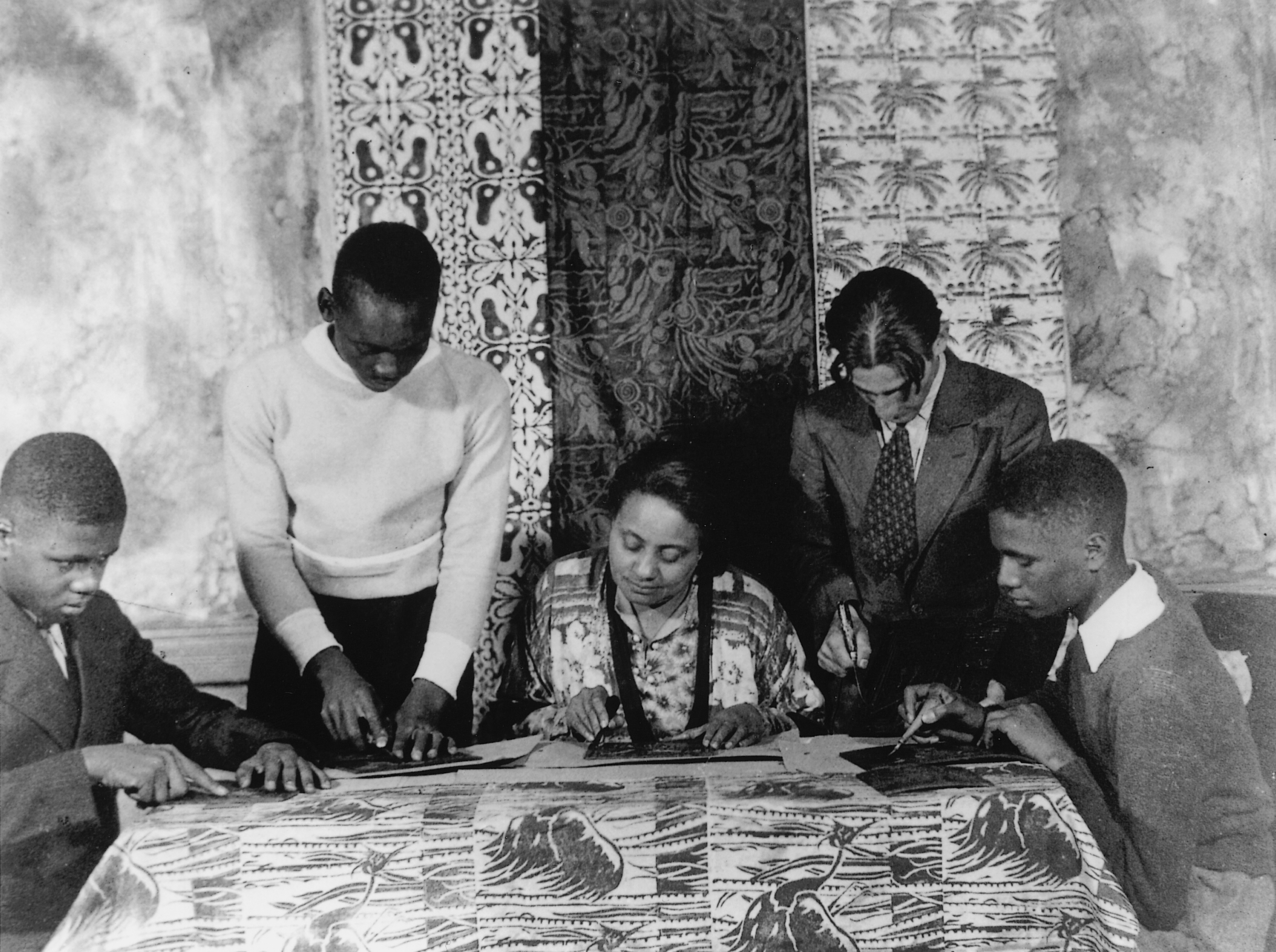
- Elizabeth Hutton Turner, “The Education of Jacob Lawrence,” in Over the Line: the Art of Jacob Lawrence, 97-120
- Patricia Hills, “Home in Harlem: Tenements and Streets,” in Painting Harlem Modern: the Art of Jacob Lawrence (Berkeley: University of California Press, 2009), 169-204
- Lowery Stokes Sims, “The Structure of Narrative: Form and Content in Jacob Lawrence’s Builders Paintings, 1946-1998,” in Over the Line: the Art of Jacob Lawrence, 201-228
Week 3: Representation and the Art World
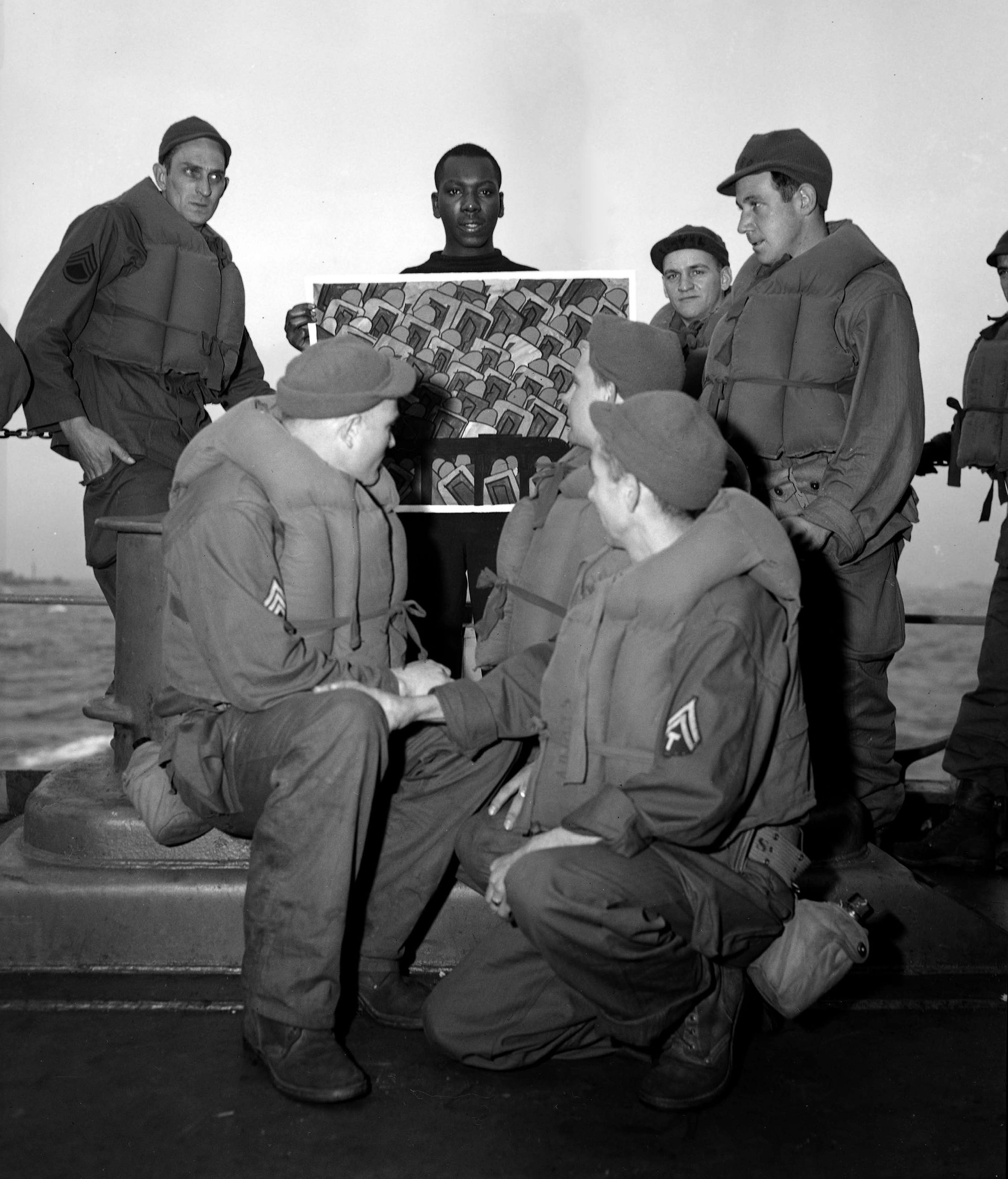
- John Ott, “Battle Station MoMA: Jacob Lawrence and the Desegregation of the Armed Forces and the Art World,” American Art 29, no. 3 (September 1, 2015): 58–89
- Bridget R. Cooks, “A Note on Terminology” and “Negro Art in the Modern Art Museum,” in Exhibiting Blackness: African Americans and the American Art Museum (Amherst: University of Massachusetts Press, 2011), xv and 17-51.
- Kobena Mercer, “Black Art and the Burden of Representation,” Third Text 4, no. 10 (1990): 61-78.
Week 4: (Re)constructing History
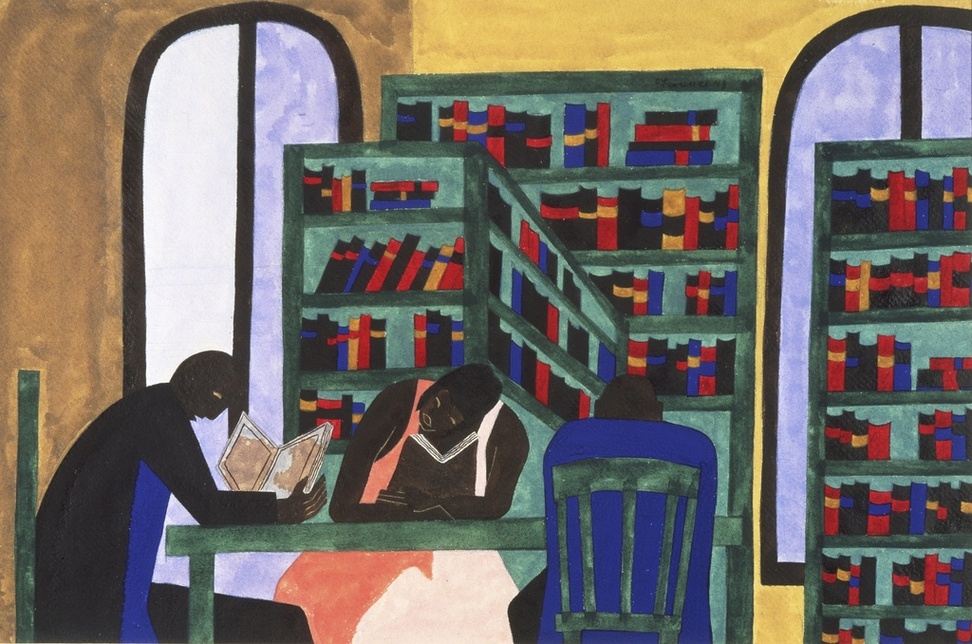
- Arthur A. Schomburg, “The Negro Digs Up His Past,” in The New Negro : An Interpretation, ed. Alain LeRoy Locke (New York: Albert and Charles Boni, 1925).
- Lonnie G. Bunch III and Spencer R. Crew, “A Historian’s Eye: Jacob Lawrence, Historical Reality, and the Migration Series,” in Elizabeth Hutton Turner, ed., Jacob Lawrence: The Migration Series (Emeryville, CA: Rappahannock Press, in association with the Phillips Collection, 1993), 23-31.
- Leah Dickerman, “Fighting Blues,” in Leah Dickerman and Elsa Smithgall, eds., Jacob Lawrence: The Migration Series. (N.Y.: The Museum of Modern Art, 2017), 10-31
- Sarah Kelly Oehler, “Yesterday, Today, Tomorrow: Charles White’s Murals and History as Art,” in Sarah Kelly Oehler and Esther Adler, eds., Charles White: A Retrospective, First edition (Chicago, IL: The Art Institute of Chicago, 2018), 21-38
- Austen Barron Bailly, “To and from Decatur Street: Jacob Lawrence’s Brooklyn and the War of 1812 Struggle panels,” in Jacob Lawrence: American Struggle, 48-63
Week 5: The American Struggle
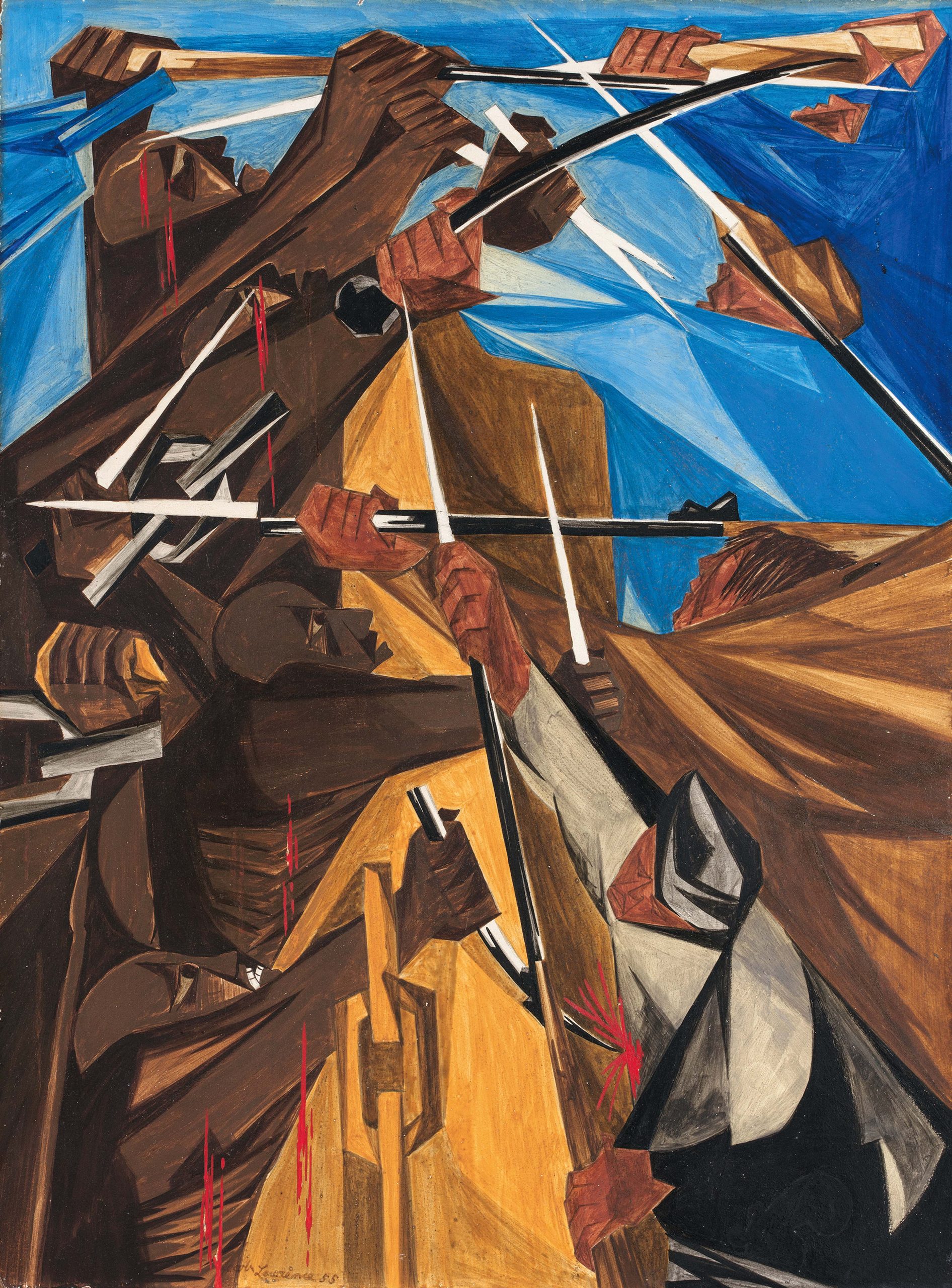
- Barbara Earl Thomas, “Tender Beauty, Wounded Hope,” in Jacob Lawrence: American Struggle, 13
- Elizabeth Hutton Turner, “Reading History: Recovering Jacob Lawrence’s Lost American Narrative,” in Jacob Lawrence: American Struggle, 24-47
- James Smalls, “A Ghost of a Chance: Invisibility and Elision in African American Art Historical Practice.” Art Documentation: Journal of the Art Libraries Society of North America 13, no. 1 (1994): 3-8.
- Eddie Chambers, “It’s Time to Share,” Colloquium, Panorama: Journal of the Association of Historians of American Art 6, no. 2 (Fall 2020)
- Eddie Chambers, “The Difficulty of Naming White Things,” Small Axe 16, no. 2 (2012): 186–97
- Richard J. Powell, “Linguists, Poets, and “Others” on African American Art,” American Art 17, no. 1 (Spring 2003). Special issue: Writing African American Art History.
- Seph Rodney, “Probing the Proper Grounds for Criticism in the Wake of the 2019 Whitney Biennial,” Hyperallergic, 2019
- Simone Leigh, instagram post, May 6, 2019
PART 2: Lawrence in Context
Week 6: The Black Artist in America
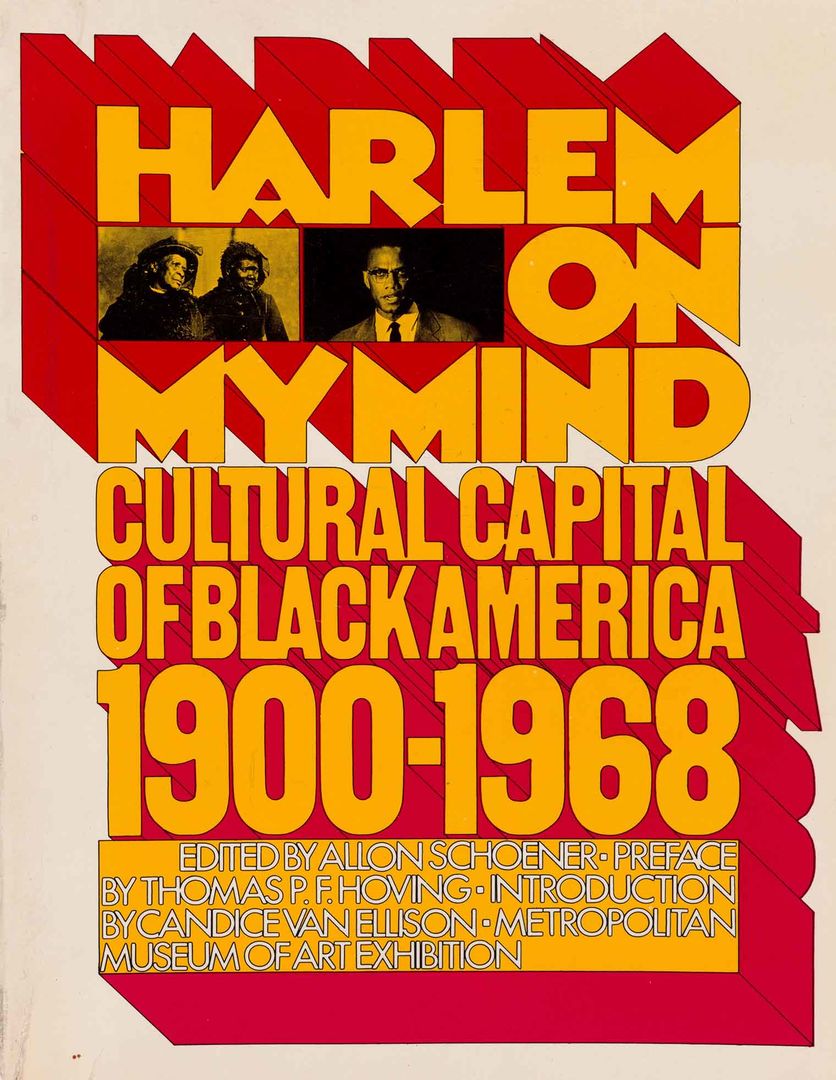
- “The Black Artist in America: A Symposium.” Romare Bearden, Sam Gilliam, jr., Richard Hunt, Jacob Lawrence, Tom Lloyd, William Williams, and Hale Woodruff. The Metropolitan Museum of Art Bulletin 27, no. 5 (1969): 245-261.
- Tom Lloyd, “Black Art – White Cultural Institutions,” in Black Art Notes, 1971
- Paul J. Karlstrom, “Jacob Lawrence: Modernism, Race, Community,” in Over the Line: the Art of Jacob Lawrence, 229-246
- Connie H. Choi, “Spiral, the Black Arts Movement, and “Where We At” Black Women Artists,” in Catherine Morris and Rujeko Hockley, eds., We Wanted a Revolution: Black Radical Women, 1965-85: A Sourcebook (Brooklyn, NY: Brooklyn Museum, 2017), 26-32
- Kelly Baum, Maricelle Robles, and Sylvia Yount, “Harlem on Whose Mind?”: the Met and Civil Rights,” February 17, 2021
- Holland Cotter, “What I Learned from a Disgraced Art Show on Harlem,” New York Times, August 19, 2015
- Bridget R. Cooks, “Black Artists and Activism: Harlem on my Mind, 1969,” in Exhibiting Blackness : African Americans and the American Art Museum, 2003
- Hannah Foster, The Black Arts Movement (1965-1975). BlackPast.org, March 2014
- “The Black Student Union at UW,” Seattle Civil Rights & Labor History Project (https://depts.washington.edu/civilr/BSU_intro.htm)
- Marc Robinson, “The Early History of the UW Black Student Union,” Seattle Civil Rights & Labor History Project (https://depts.washington.edu/civilr/BSU_beginnings.htm)
- BSU Letter to President Odegaard, May 6, 1968
Week 7: Style, Form, Composition
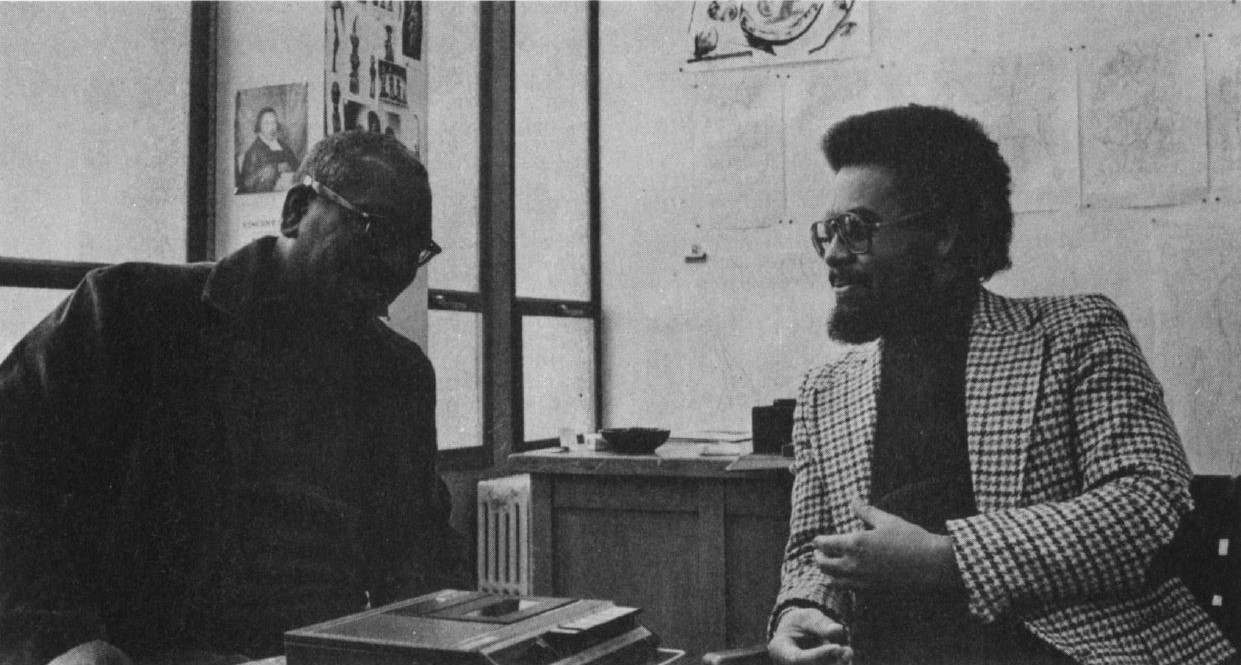
- Clarence Major and Jacob Lawrence, “Clarence Major Interviews: Jacob Lawrence, the Expressionist.” The Black Scholar 9, no. 3 (1977): 14-27
- Richard Powell, “Harmonizer of Chaos: Jacob Lawrence at Midcentury,” in Over the Line: the Art of Jacob Lawrence, 147-174
- Mark Godfrey, “Notes on Black Abstraction,” and Zoe Whitley, “American Skin: Artists on Black Figuration,” in Mark Godfrey and Zoé Whitley, eds., Soul of a Nation: Art in the Age of Black Power (London: Tate Publishing, 2017), 147-225
- Bing Davis, “White Art Historians – Black Art,” in Black Art Notes, 1971
- Sheehan, Tanya. “Confronting Taboo.” American Art 28, no. 3 (2014): 28-51.
Week 8: Labor, Work, Tools
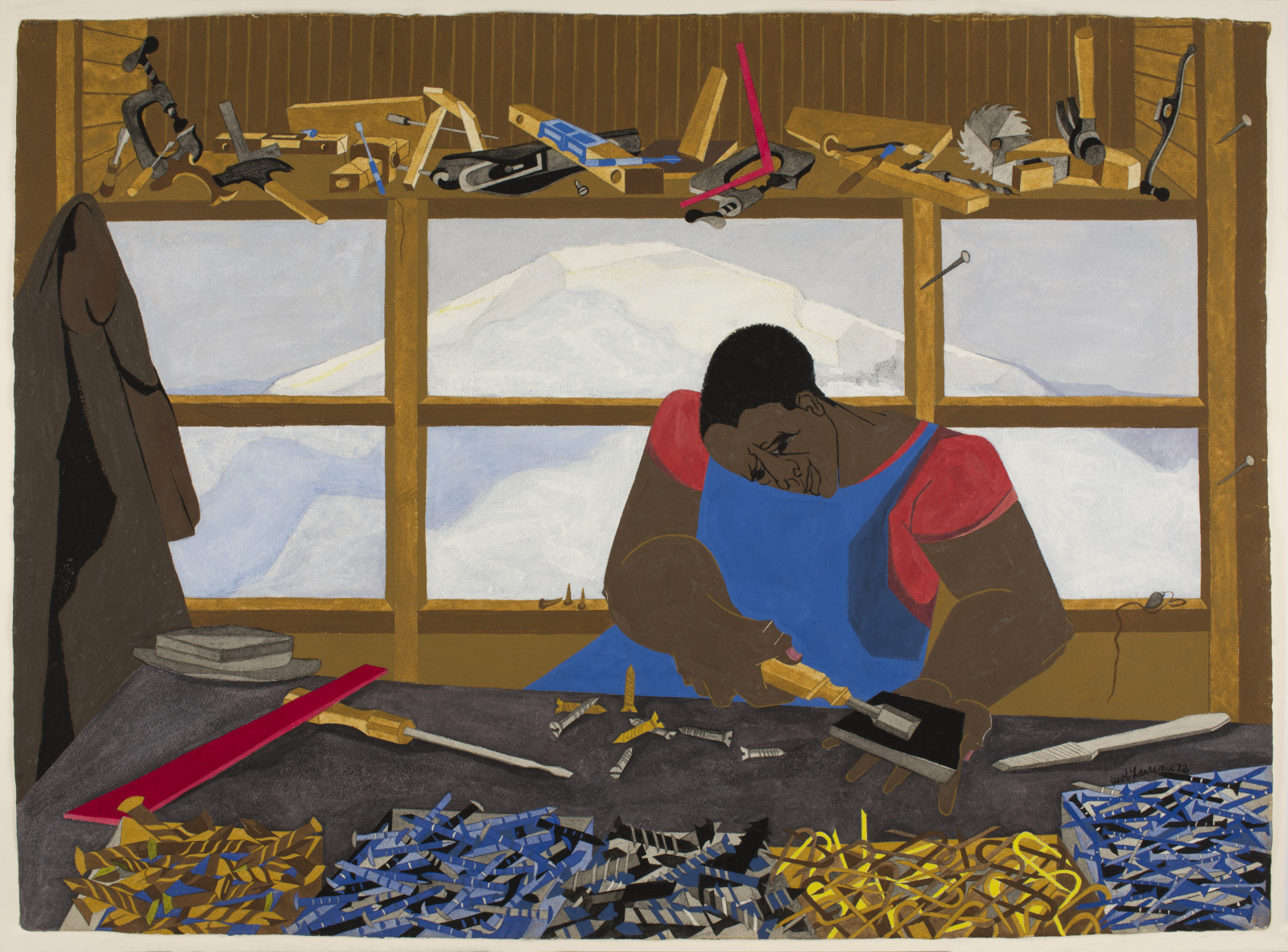
- David Ward, “The Face of Labor,” in David C. Ward and Dorothy Moss, eds., The Sweat of Their Face: Portraying American Workers (Washington, DC: Smithsonian Books ; In association with the National Portrait Gallery, 2017).
- Ethan W. Lasser, “Factory Craft: Art and Industry in Conversation,” The Journal of Modern Craft, 6:3, 315-320, 2013
- Explore videos from “The Tool at Hand,” Milwaukee Art Museum and the Chipstone Foundation, 2013
- Anthony Lee, “Workers and painters: social realism and race in Diego Rivera’s Detroit murals” in 930s in the Western Hemisphere, Refiguring Modernism 4 (University Park, Pa: Pennsylvania State University Press, 2006).
- Peter Nesbett, Jacob Lawrence : the Builders, recent paintings, 1998
- Julia Bryan-Wilson, Art Workers: Radical Practice in the Vietnam War Era (Berkeley: University of California Press, 2009), 1-39
- Smith, Pamela H. “In the Workshop of History: Making, Writing, and Meaning.” West 86th: A Journal of Decorative Arts, Design History, and Material Culture 19, no. 1 (2012): 4-31.
- Ethan W. Lasser (2013) Scaling up: Theaster Gates, Jr, and His Toolkit, The Journal of Modern Craft, 6:1, 79-86
- Jonathan Weinberg, “I want muscle : male desire and the image of the worker in American art of the 1930s,” in The social and the real : political art of the 1930s in the western hemisphere, 2006
- Gwendolyn DuBois Shaw, “Migration and Muralism: New Negro Artists and Socialist Art,” in Barbara Haskell, ed., Vida Americana: Mexican Muralists Remake American Art, 1925-1945 (New York : New Haven: Whitney Museum of American Art ; in association with Yale University Press, 2020)
Week 9: Legacies and Lineages
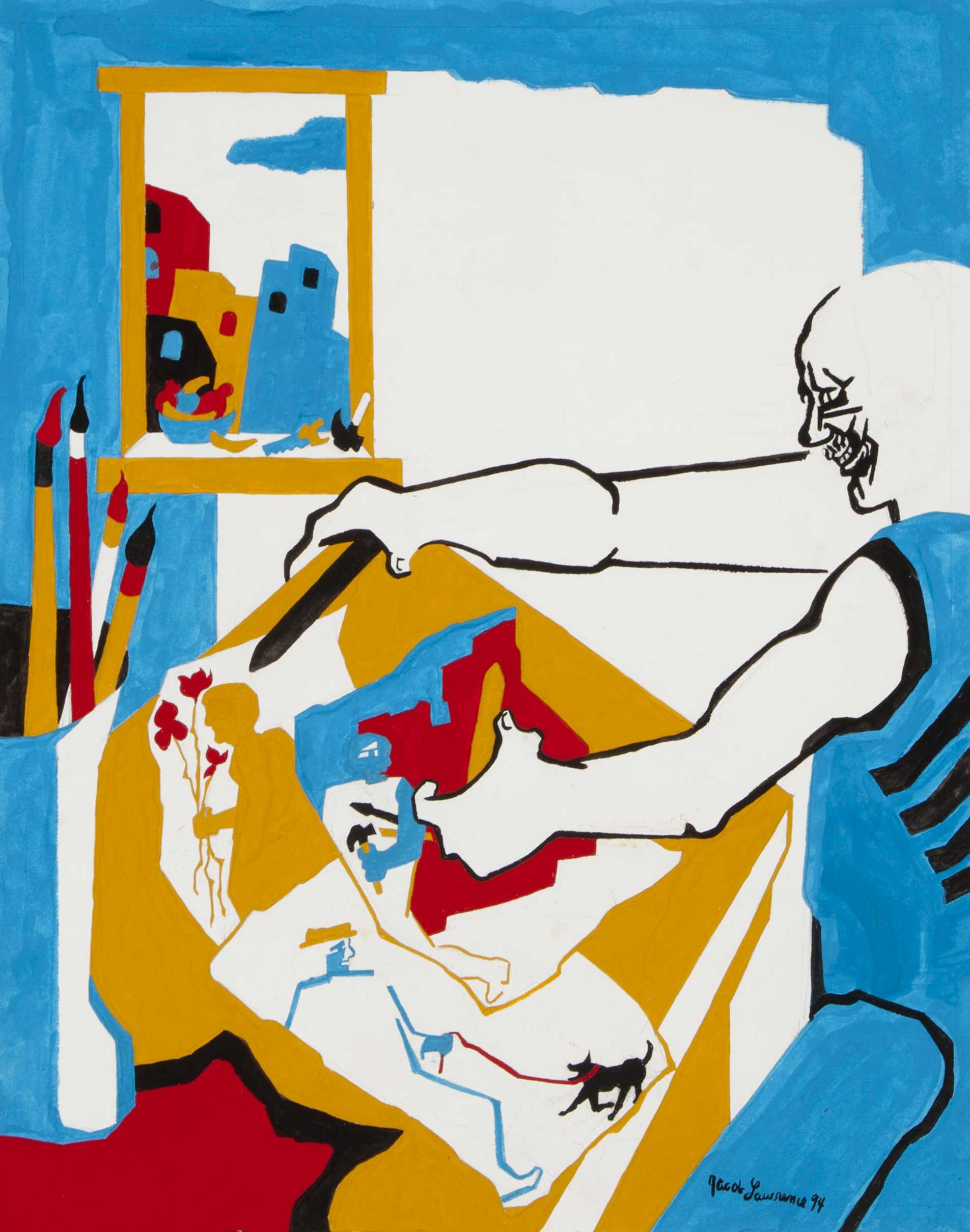
- Julie Levin Caro, “Jacob Lawrence at Black Mountain College, Summer 1946,” in Storm Janse van Rensburg, Jacob Lawrence: lines of influence (Savannah, GA: SCAD Museum of Art, 2020), 131-144
- Julie Levin Caro, “The Legacy of Black Mountain College on Lawrence’s Art Pedagogy,” in Between Form and Content: Perspectives on Jacob Lawrence + Black Mountain College (Asheville, NC: Black Mountain College Museum + Arts Center, 2019), 77-81
- Patricia Hills, “Epilogue,” in Painting Harlem Modern, 259-270
- Peter Nesbett, “The Incomplete Jacob Lawrence,” in American Masterworks from the Merrill C. Berman Collection, 2015
- Jacob Lawrence et. al., “Faculty Notes,” in Drawing, at the Henry : an Exhibition of Contemporary Drawings by Eighteen West Coast Artists, April 5-May 25, 1980, Henry Art Gallery, University of Washington. Seattle: The Gallery, 1980.
- Victoria L. Valentine, “Lines of Influence: Commissioned Works by Barbara Earl Thomas and Derrick Adams Respond to Legacy of Jacob Lawrence,” Culture Type, 2/4/2018
- Barbara Earl Thomas: the Geography of Innocence at the Seattle Art Museum

